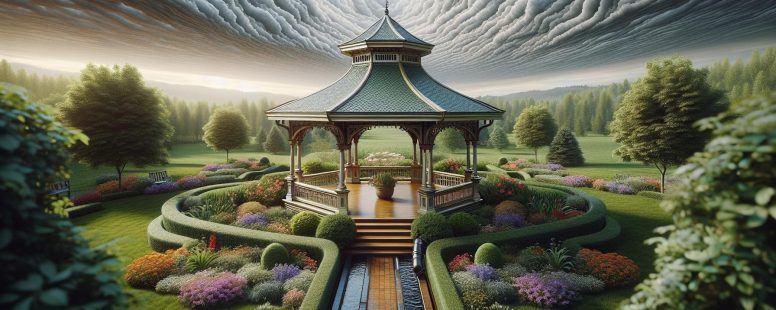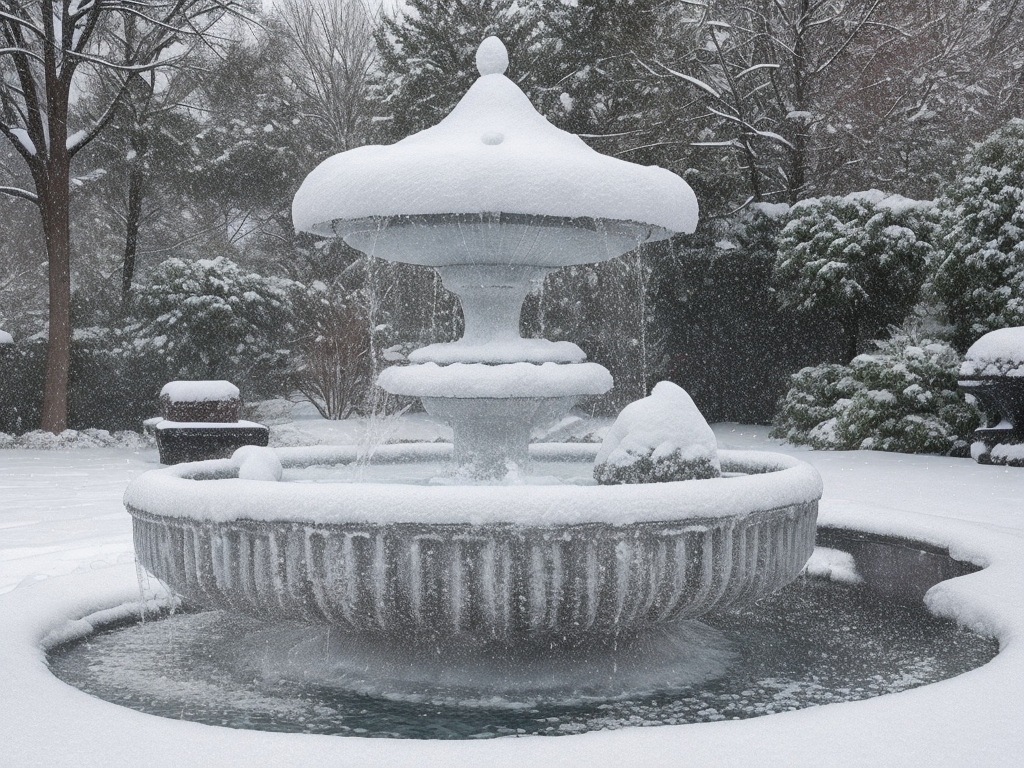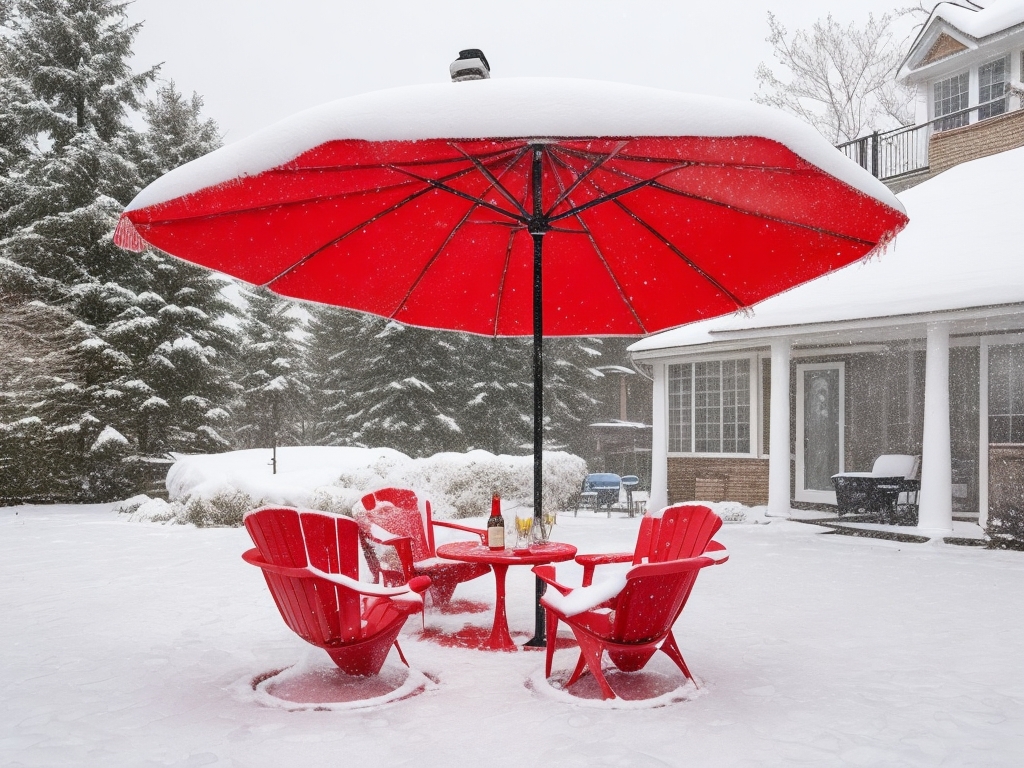Exploring the Need for Gutters in Gazebos: A Comprehensive Guide
Ever wondered if your gazebo really needs a gutter? You’re not alone. This is one of the most common questions that homeowners grapple with when setting up their outdoor spaces. After all, gazebos are meant to be places of relaxation and enjoyment – so why worry about something as mundane as gutters?
Yet, it’s an issue worth considering. While you might think that rainwater would simply roll off the sides of your gazebo roof without causing any problems, there could be more at stake here than meets the eye.
Stay tuned as we investigate into this topic further in our detailed guide on whether or not gazebos need gutters! Let’s unravel this mystery together.
Understanding Gazebos and Their Structure
In this section, let’s investigate into the essence of gazebos, their structure and design principles.
The Basics of Gazebo Design
A gazebo serves as a decorative piece in your garden or backyard while offering you shelter from sunrays or raindrops. It’s typically an open-sided construction with a solid roof – usually octagonal but not always.
The primary element to consider during gazebo design is its purpose: relaxation area, dining space under sky or just a focal point for world beautification? This intent dictates both structural requirements like size and shape along with aesthetic choices such as material type (wooden structures evoke rustic charm whereas metal ones offer modern sleekness) and color scheme.
Another crucial aspect lies in determining whether it would be freestanding or attached to your home; each option brings unique considerations about installation difficulty level, accessibility convenience etcetera. For instance, stand-alone gazebos might demand concrete foundations making them more labor-intensive compared to house-attached variants which can use existing walls for support.
Different Types of Gazebos
There are myriad types when it comes down to selecting that perfect gazebo:
- Pavilion-style: These large-sized options radiate grandeur through simple yet elegant designs featuring rectangular shapes.
- Victorian style: A touch classic aesthetics marked by ornate details adorning the structure including spires atop pointed roofs.
- Rotunda style: Known for round layouts topped off by domed roofs reminiscing Roman architecture influence.
4.Etc., depending on factors ranging from location compatibility (does coastal theme fit high-altitude mountainous terrain?) up till personal preferences about ambiance desired inside these outdoor spaces – whimsical fairytale-like vibe versus chic minimalistic aura?
The Importance of Gutters
In this section, let’s investigate deeper into the role gutters play and why they’re beneficial.
How Gutters Function
Gutters form an integral part of any roofing structure, including gazebos. Their primary function lies in directing rainwater away from your gazebo’s roof and its foundation. This system includes a series of interconnected troughs that collect water runoff from the rooftop edge, then guide it to downspouts strategically located around your gazebo.
Imagine during a heavy rainfall without gutters; water cascades off all sides directly onto whatever is below – be it plants or patio furniture or even seeping into the base causing potential structural issues over time! Now picture these scenarios with properly installed gutter systems: you’d notice how efficiently they channel large volumes of stormwater towards specific points safely distant from sensitive areas like foundations or landscaping features.
Advantages of Having Gutters
With clarity on their functionality established, now consider several benefits gained by installing them on gazebos:
- Prevent Water Damage: By guiding rainwater away effectively reduces risks related to moisture damage.
- Protect Landscaping: They minimize soil erosion near structures as well as prevent garden beds surrounding them getting swamped in storms.
3.Finally,Increase Lifespan: A lesser-known advantage is that proper drainage helps increase longevity not just for structures themselves but also outdoor furnishings often housed within them!
Do Gazebos Need Gutters?
The necessity of gutters in gazebos is a topic that has been debated by homeowners and experts alike. Delving into this subject can provide insights on how to maintain the structural integrity, aesthetics, and functionality of your gazebo.
The Role of Gutters in Gazebos
Gutters perform an essential role for any structure exposed to weather elements – including gazebos. They effectively channel rainwater away from the roof surface, directing it towards downspouts that lead water safely away from the foundation or base.
- Prevention: By controlling runoff flow paths, gutters prevent rainwater from spilling off randomly around your gazebo’s perimeter.
- Protection: Rainfall streaming directly onto surfaces below might result in erosion over time – potentially damaging landscaping efforts near your gazebo.
- Preservation: Preventing excess moisture accumulation helps deter mold growth on wooden components or rust formation on metal parts—so preserving their condition longer.
In essence, while not universally deemed mandatory for all types of gazebos depending upon specific circumstances (such as local climate conditions), incorporating gutter systems could indeed prove beneficial given these functions they serve within its overall design scheme.
Potential Drawbacks of Not Having Gutters
Without effective drainage solutions like gutters:
- You’re risking potential harm due to uncontrolled rainfall run-off: Siding materials may become stained; Foundation areas might experience accelerated wear-and-tear caused by constant wetness after heavy rains; Surrounding plants risk being drowned out during torrential downpours if left unprotected against such onslaughts.
- Debris accumulation becomes another concern: Dead leaves falling off nearby trees often land atop roofs without slant angles steep enough causing clogs leading eventually toward problems akin those seen when household plumbing gets blocked up!
By ensuring proper installation techniques coupled alongside regular maintenance routines though—you’ll minimize chances encountering these aforementioned issues.
Factors to Consider when Installing Gutters on Gazebos
When it comes to installing gutters on your gazebo, there are some key factors you must consider. These include evaluating your gazebo’s exposure to rain and considering the surrounding world.
Evaluating Your Gazebo’s Exposure to Rain
The first step in determining whether or not a gutter system is needed for your gazebo involves assessing its exposure level to rainfall. Depending on where the structure is located, this could vary significantly.
For instance, gazebos situated under large trees often have less direct exposure due precipitation being intercepted by tree canopies above. But, they might also be more susceptible debris accumulation leading potentially clogged drainage systems.
On the other hand, gazebos exposed directly without any natural shields tend get drenched during downpours which accelerates wear and tear if not properly managed with an efficient gutter system.
It’s essential hence assess how much rainfall typically hits surface of roof before making decision about installation of gutters.
Considering The Surrounding World
Another critical factor when thinking about gutter installation revolves around characteristics of land that surrounds your gazebo site.
Landscapes sloping towards foundation increase chances water pooling at base causing potential damage over time whereas areas graded away from structure promote natural runoff even heavy storms reducing need for extensive artificial drainage mechanisms like gutters.
Plus properties lush vegetation close proximity might find leaves twigs frequently ending up their drainpipes creating risk blockages while those relatively clear surroundings face lesser such issues thereby lowering maintenance demands overall effectiveness requirement these installations.
Options for Gazebo Gutter Systems
As we investigate deeper into the topic of gazebo gutters, let’s take a look at some popular options. Each type carries unique attributes and offers various benefits that may suit your specific needs.
Traditional Gutter Systems
The traditional gutter system remains a classic choice among homeowners with gazebos in their yards. It comprises horizontal channels fixed along the roof edge to collect rainwater runoff, connected to vertical downspouts that direct water away from the structure.
These systems are often constructed from durable materials like aluminum or vinyl which resist rusting and wear over time. They’re known for their efficiency in managing heavy rainfall – an advantage especially relevant if you live in areas prone to intense weather conditions.
Traditional gutters can be seamlessly integrated with most gazebo designs due to availability of different shapes (like K-style or half-round) and variety of color choices. Also, they offer compatibility with multiple accessories such as leaf guards and heat tapes—practical solutions against common issues like clogging by debris or freezing during winter months respectively.
But, regular maintenance is necessary; cleaning out leaves, twigs ,and other debris becomes part-and-parcel when opting for this system.
Rain Chains: An Aesthetic Alternative
Rain chains present themselves as an aesthetically pleasing alternative to conventional gutter systems — perfect match if style plays significant role in your decision-making process alongside practicality!
Originating from Japan where they’re known as “kusari-doi”, these decorative devices hang vertically off roof corners guiding rainwater downwards via series of interconnected cups or links designed artistically . The sight—and sound—of cascading water through chain links add tranquil charm enhancing ambiance around your outdoor living space significantly .
Material wise ,rain chains range widely- copper being favored pick owing its beautiful patina developed overtime while stainless steel scores points on durability front . On flip side though ,they aren’t quite effective in handling heavy rainfall or snowfall as traditional gutters.
So, your choice between a conventional gutter system and rain chains might hinge on weighing functionality against aesthetics. Keep local weather conditions , maintenance commitment level along with personal preference into account when deciding best option for your gazebo’s water management needs.
How to Properly Maintain Gazebo Gutters
A gazebo’s elegance and longevity hinge significantly on the maintenance of its gutters. This section provides insights into routine cleaning practices, along with tips for addressing common gutter issues.
Routine Cleaning and Maintenance Tips
Gutter cleanliness is paramount in preserving your gazebo’s integrity over time. Here are some guidelines you can follow:
- Schedule Regular Cleanings: At least twice a year—typically during spring and fall—you’ll want to clean out leaves, twigs, or any other debris from the gutters.
- Use Appropriate Tools: Long-handled brushes help remove stubborn dirt while protective gloves ensure safety when removing sharp objects like broken branches.
- Check for Leaks or Damage: Inspect your gutters regularly for signs of wear-and-tear such as holes or rust patches that might lead to leaks; these often occur at joints where two sections meet.
- Ensure Correct Slope: A properly sloped gutter aids water flow towards downspouts; if you notice standing water after rainfalls it may be necessary adjust this angle accordingly.
Troubleshooting Common Gutter Issues
Even with meticulous upkeep, certain challenges might arise concerning your gazebo’s gutter system.
Overflowing Water
If water spills over the sides during rainfall even though there aren’t blockages present—the problem could lie in insufficient capacity due either size limitations relative area being drained lack pitch directing runoff toward downspout(s). Consider installing larger ones increasing slope respectively solve issue within constraints mentioned earlier paragraph about regular checks adjustments required maintain functionality under varying conditions encountered throughout seasons affecting rate volume precipitation falling upon structure especially those areas experiencing heavy showers frequent intervals which also heightens risk causing structural damage through prolonged exposure high levels moisture hence reinforcing need constant vigilance proactive response preventing potential problems before they escalate beyond control leading costly repairs replacements not mention disrupting enjoyment outdoor living space provided by such beautifully designed architectural features that serve as focal points gardens or backyards enhancing aesthetics while offering shelter from elements providing relaxing environment for leisure activities whether dining, reading, simply enjoying view nature’s beauty unfolding all around.
Sagging Gutters
Over time gutters might start sag due to weight accumulated debris or improper installation. You’ll want reinforce them with brackets ensuring they’re securely fastened structure prevent further damage maintain proper functioning system so contributing overall stability gazebo prolonging lifespan through preventive measures taken in response early signs trouble rather than waiting until situation worsens requiring more extensive intervention which could result additional costs inconvenience caused disruptions normal usage during period of repair work being carried out depending on severity issue at hand its impact other parts building materials involved including roofing siding etc., whose condition can be adversely affected constant exposure adverse weather conditions unless adequately protected effective rainwater management practices facilitated efficient gutter systems acting as frontline defense against forces erosion degradation unleashed every downpour channeled away safely without causing harm surroundings preserving their natural charm appeal complementing grandeur elegance gazebos themselves reflecting homeowners’ taste style sophistication displayed choice architecture landscaping exemplifying attention detail commitment quality evident meticulous care maintenance undertaken ensure longevity durability these cherished possessions adding value property increasing enjoyment pleasure derived utilization thereof satisfying sense pride accomplishment owning maintaining well-kept garden backyard equipped functional aesthetically pleasing amenities like the ones described above fulfilling purpose serving needs desires occupants visitors alike bringing joy satisfaction everyone fortunate enough experience warmth hospitality extended within boundaries this personal paradise created love passion appreciation finer things life enjoyed abundance amidst serenity tranquility provided serene setting conducive relaxation rejuvenation mind body soul enriched harmony balance achieved blending man-made structures surrounding world forming unified whole greater sum parts symbolizing unity diversity coexistence mutual respect shared responsibility stewardship earth resources entrusted our safekeeping preservation future generations inherit cherish continue tradition sustainable living mindful conservation preservation.
Gazebo Design Ideas Without Gutters
When it comes to designing gazebos, there’s a world of possibilities even without the use of gutters. The trick lies in incorporating innovative solutions that effectively manage rainwater while enhancing the structure’s aesthetic appeal.
Incorporating Rain Chains or Downspouts in Your Gazebo
Consider using rain chains or downspouts as part and parcel of your gazebo design. These elements not only help channel water away from your structure but also contribute positively to its overall aesthetics.
For instance, you can integrate decorative rain chains into your gazebo architecture as an alternative to conventional gutter systems. Originating from Japan, these unique accessories guide rainfall downward through interconnected cups or links (1), adding charm and elegance to outdoor spaces.
Downspouts too serve their purpose well when incorporated strategically within the gazebo design framework. They’re efficient at managing heavy precipitation and can blend seamlessly with different architectural styles (2).
But, remember maintenance remains key regardless of whether you opt for traditional downspout systems or go for more aesthetically appealing options like ornamental rain chains – both require regular cleaning schedules and checks against leaks for optimum performance.
Innovative Designs that Eliminate the Need for Gutters
Some homeowners prefer ditching standard gutter structures altogether by opting instead for creative designs crafted specifically around effective rainfall management mechanisms.
One such option involves crafting a sloping roof where each side extends past supporting posts – this ensures excess water slides off easily onto surrounding world areas designed explicitly for drainage purposes(3). This style doesn’t just cut back on potential damage caused due to accumulated runoff but also allows freedom over material choices since there aren’t any specific requirements tied up with facilitating smooth flow along gutters’ length.
Alternatively, consider experimenting with tiered roofs which are particularly useful when looking towards eliminating typical problems associated with flat-roofed gazebos like pooling waters during monsoons (4). Here, rainwater cascades down multiple levels before finally being dispersed at ground level – much like a mini waterfall!
Conclusion
So, do gazebos need gutters? It’s clear that your decision hinges on several key factors. Gutters are crucial for effective rainwater management, protecting the gazebo and surrounding world from potential water damage. They help maintain the structural integrity and aesthetic appeal of your outdoor haven.
Yet it’s not a one-size-fits-all scenario. Depending on your specific circumstances such as exposure to rainfall or debris accumulation along with local climate conditions may influence this necessity.
Weigh up both traditional gutter systems and aesthetically pleasing alternatives like rain chains before making an informed choice balancing functionality with aesthetics while keeping maintenance preferences in mind.
And don’t forget about proactive upkeep! Regular cleaning inspections for leaks or damages will ensure longevity so you can continue enjoying those serene moments under your gazebo without worries lurking overhead!
For those who seek creativity look towards innovative designs incorporating elements like sloping roofs tiered structures even design-centric downspouts allowing seamless blending of function style sans gutters if desired!
- Decorating Your Backyard with Homemade Birdhouses: Creative Ideas to Attract Birds & Beautify Your Garden - October 3, 2025
- Creating Stepping Stones with Kids: A Fun Backyard Project for Family Bonding and Creativity - October 3, 2025
- Where Can I Sell Pottery Locally? Best Places and Tips for Selling Handmade Ceramics - October 3, 2025




